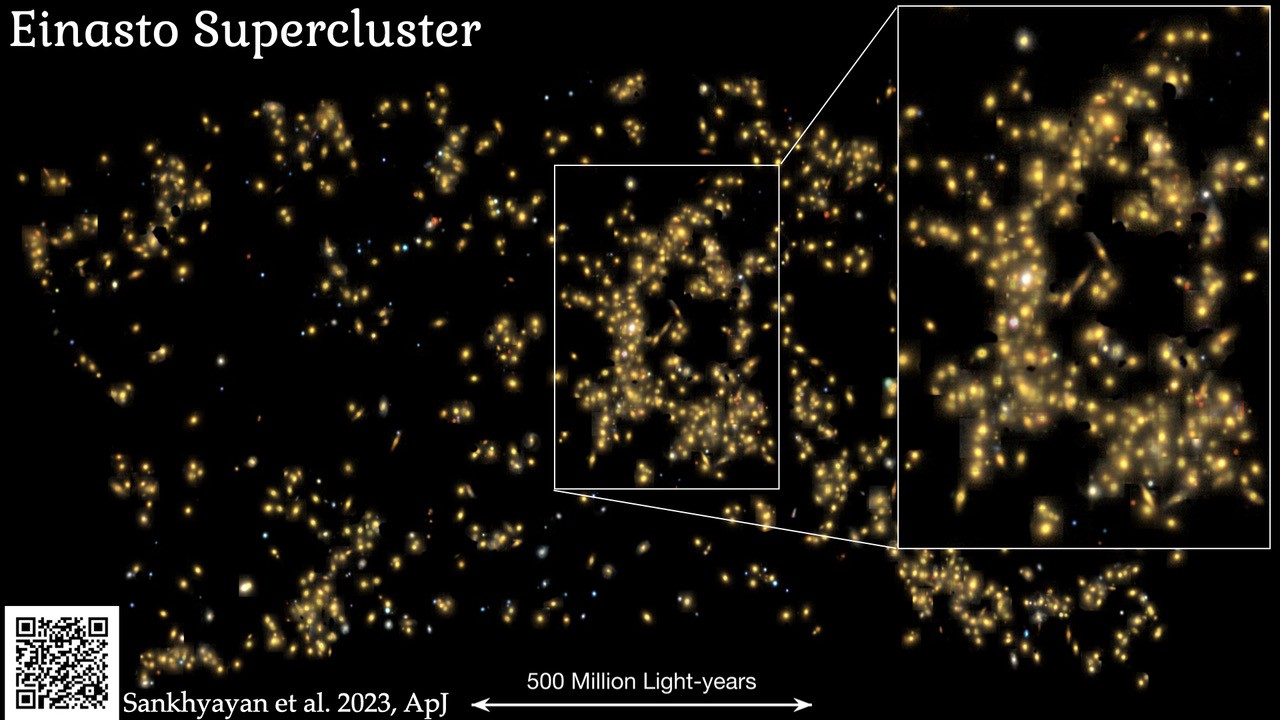The Earth’s place in space is a fairly familiar one with it orbiting an average star. The star – our Sun – orbits the centre of our Galaxy the Milky Way. From here onwards, the story is less well known. The Milky Way is part of a large structure called the Laniakea Supercluster which is 250 million light years across! That really is a whacking great area of space and it contains at least 100,000 galaxies. There are larger superclusters though like the newly discovered Einasto Supercluster which measures an incredible 360 million light years across and is home to 26 quadrillion stars!
When I give public lectures, I always get a strange satisfaction out of telling the audience that galaxies don’t exist! I go on to explain that, like a city which is a collection of stuff, galaxies are collections of things bound together under the force of gravity. A typical galaxy is simply a collection of stars, nebulae, clusters, planets, comets and so on, take them away and a galaxy won’t exist! Superclusters are largely the same, just a collection of galaxies bound together (well, not completely) under the force of gravity.

Superclusters like Laniakea and Einasto (which is 3 billion light years away) are among the largest structures in the Universe. The discovery of this latest supercluster has been named after Professor Jaan Einasto who was a pioneer in the field of superclusters and celebrated his 95th birthday on 23 February 2024.
When it comes to visualising the sheer size of these structures imagine an average coin (I really don’t think it matters too much which coin you imagine) on a football pitch. This coin represents the Milky Way Galaxy and the length of the pitch would be the extremities of the supercluster! You might also imagine the Sun as a golf ball and the entire collective mass of the supercluster as Mount Everest in comparison!

The announcement came from a group of international astronomers from the Tartu Observatory who also surveyed 662 other superclusters. Their work (which was published in the Astrophysical Journal) also revealed some interesting dynamics inside superclusters for example, they found that the galaxies within a supercluster are receding from each other slower than the general expansion of the universe. This is due to the gravitational pull of the supercluster acting as a brake on the expansion. Whilst it is slowing the expansion of the area it is not slowing it enough to stop the galaxies from drifting apart given enough time. Superclusters should be considered temporary, changing phenomena.
They also found that there was a relationship between the density and size of a supercluster. The relationship was an inverse square relationship meaning that the density of a supercluster decreases with the square of its size.
Source : Einasto Supercluster: the new heavyweight contender in the universe

